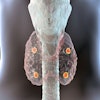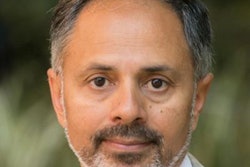
The molecular imaging and radiology communities are mourning the death of Dr. Sanjiv Sam Gambhir, PhD, the chair of radiology at Stanford University, who died of cancer on July 18. He was 57.
 Dr. Sanjiv Sam Gambhir. Image courtesy of Stanford University.
Dr. Sanjiv Sam Gambhir. Image courtesy of Stanford University.Gambhir was born in India in 1962 and emigrated to the U.S. with his parents and sister in 1969, according to his Wikipedia page. He grew up in Phoenix and attended Arizona State University, where he earned a Bachelor of Science degree in physics; he then earned MD and PhD degrees at the University of California, Los Angeles. He joined Stanford in 2003 and served as the university's chief of nuclear medicine until he was named to the top radiology post.
Much of Gambhir's research work focused on the development of molecular imaging techniques to monitor processes at the cellular and molecular level. This included PET reporter gene technology, imaging of gene and cell therapies, and Raman imaging in vivo and photoacoustic molecular imaging with novel imaging agents, according to his Wikipedia page.
Gambhir continued to maintain a prolific publishing output as Stanford's chair of radiology, most recently including an editorial on clinical photoacoustic imaging published on June 17 in Photoacoustics, a June 29 article on a new PET radiotracer called 6''-[F-18]fluoromaltotriose, and a June 12 article on PET imaging of natural killer cell activation receptor NKp30 in Journal of Nuclear Medicine. At the time of his death, he had over 680 papers published and more than 40 patents pending or granted.
Gambhir also won numerous awards and served in other leadership positions, for example serving as president of the World Molecular Imaging Society. Gambhir was also one of just a handful of radiologists who have won Minnies awards twice in their careers -- one in 2006 and another in 2011.
Gambhir is remembered both for his accomplishments in research and his work mentoring younger researchers, and in particular his warm personality, according to SNMMI President Alan Packard, PhD.
"Sam's research and leadership improved healthcare for patients around the world, while at the same time inspiring a new generation of researchers to follow in his path," Packard said. "With Sam's passing, we have lost not only a giant in our field but also a wonderful human being who we will long remember for his empathy, charisma, creativity and inspirational leadership."
Gambhir also had a major impact at Stanford University, which issued a statement mourning his death.
"Sam Gambhir's departure from this world leaves us with deep sorrow yet profound gratitude that he made a vast impact on the world of science and humanity, to our school and department, and to [us as individuals]," read a statement attributed to Drs. Garry Gold, David Larson, and Yun-Ting Yeh. "It is difficult to put into words the sense of loss that we all feel at this time. Like many others with such impact and potential, Sam's departure was too soon. We will all miss him dearly."
Gambhir is survived by his wife Aruna; their son Milan died in 2015 at the age of 16.




















